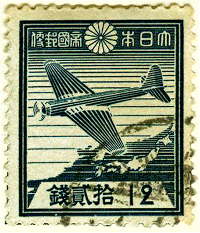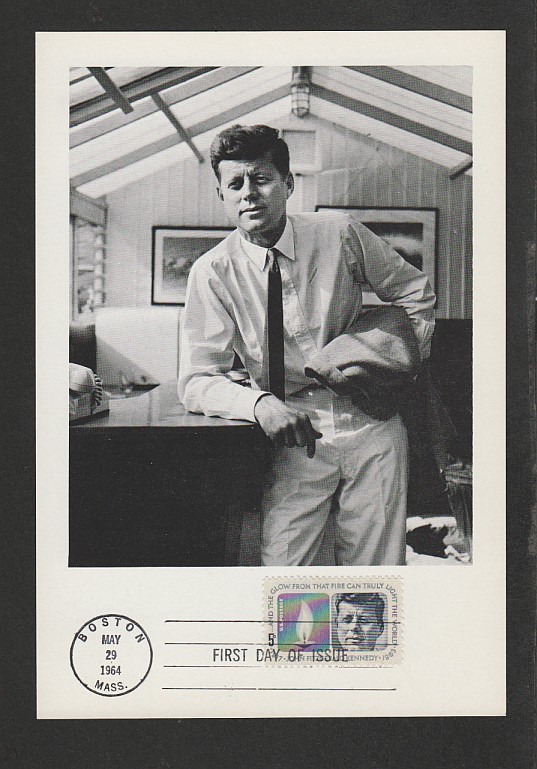
Discussion - Member to Member Sales - Research Center

Discussion - Member to Member Sales - Research Center

The Federal Period issues of 1901-1912 and the early Postage Due issues up to 1922 were printed on a number of different watermarked papers. These are illustrated and discussed in the appropriate Section. Six types of watermarked paper were used for Commonwealth stamps between 1913 and 1965.






Beginning in 1948, the use of watermarked paper was phased out for those denominations below the current basic letter rate (2½d), this policy was later extended, and after 1956 only those denominations of 5/- and above were printed on watermarked paper.
Example of an inverted watermark (inverted Type 6) that occurs with the above watermarks (should be viewed from the front of the stamp).

All decimal issues have been printed on unwatermarked paper.

4 Members
like this post.
Login to Like.
Those six Types equate to the following in the Scott Classic Specialized catalogue:
1. Wtmk 8 -- Wide Crown and Wide A
2. Wtmk 9 -- Wide Crown and Narrow A
3. Wtmk 10 -- Narrow Crown and Narrow A
4. Wtmk 11 -- Multiple Crown and A
5. Wtmk 203 -- Small Crown and A multiple
6. Wtmk 228 -- Small Crown and C of A multiple
I just recently received a Stanley Gibbons catalogue and prefer it over Scott for a number of reasons. Example: when a plane is depicted on a stamp, the SG goes to the trouble of listing the make and model, vice Scott's generic description -- "Airplane."
Also, some Australian States stamps I was having trouble placing using the Scott catalogue, were more accurately described in the SG catalogue, particularly when it came to year of issue. These being just the observations of a relative newcomer to this area of collecting. Sorry for getting off topic, but it's too late now as I have already typed the words.
Cheers!
Eric

Login to Like
this post
I don't have the Scott Catalogue though I do have Gibbons, the information I posted came from the Australian Commonwealth Specialists's Catalogue. I prefer to use the ACSC as it is specific to Australian Commonwealth stamps (the complete set of 9 books will set a collector back AU$645).
Though some stamps (I have a couple) that is not listed in the ACSC. It's interesting how the watermark types mentioned in the Scott Catalogue is different yet the same, and confusing at the same time to any-one learning to identify pre-decimal Aussie stamps for the first time.
Obviously it comes down to the collector to choose what book to use as many Australian collectors seem to choose Stanley Gibbons and model the setting up of their collection by SG (my collection is modelled after the ACSC, not many Australians use the ACSC model).
With Scott I have read Australian collectors referring to the book though I do not personally know of any who does. All three publications are useful, though I have noticed a Scott's using simplified information (does not mention specimens, errors, varieties etc), just the normal issues, unless there is another Scott publication that does.
I must admit Gibbons surely describes the Australian States in detail, and I still use the Gibbons at times.
I'll have to look up the King George V Catalogue to see how it identifies the aircraft on the early airmail stamps.
Anyway, thanks for the information relating to the Scott's Catalogue, I'll cut and paste that so I can understand when someone uses that catalogue to describe Australian watermarks.
By the way, I changed my avatar to a colour trial proof of a South Australian stamp I have in my collection.
Cheers
Robert

2 Members
like this post.
Login to Like.
Good information Robert. And I thought that was a new avatar. A handsome stamp indeed & you can't go wrong with Queen Victoria!
By the way, I am expecting two stamps in the mail, at which point I will have a complete set of the Tasmania 1899-1900 Pictorials. Alas, some have been hinged but nevertheless will be a nice set. My album refers to the set as "Scenes of Tasmania."
Take care,
Eric

1 Member
likes this post.
Login to Like.
Some very beautifully designed stamps have come from the Victorian era. It makes no difference about them being hinged, the beauty of the engraving remains.
I'm at the moment preparing a post that shows all the Victorian proofs in my collection, I'll soon be adding more to my collection.

2 Members
like this post.
Login to Like.
Hello Robert,
I collect US and have smaller collections of some Scandinavian countrys but I do find this thread interesting. It's like being at the monthly stamp club meeting, most of the speakers talk about other areas of collecting that I don't collect I always find something new to learn. Thanks,
Vince

Login to Like
this post
Hi Vince
I like US stamps and find them quite interesting, and I'm glad that my thread is giving you interest; it's websites such as this that allows the interest of philately continue to burn bright.
Club meetings are a great place to go, and from your profile you are very active in club activity, a fantastic way of learning about stamps and making friends.
The great thing about stamps is there is something always new to learn, which is an essential part of all types of collections.
I'll be adding more information soon about stamp collecting and the stamps in my collection.
Rob

1 Member
likes this post.
Login to Like.
Member ACCC (Australian Commonwealth Collectors Club of NSW)
24 Jun 2016
06:35:06am
WATERMARKS
The Federal Period issues of 1901-1912 and the early Postage Due issues up to 1922 were printed on a number of different watermarked papers. These are illustrated and discussed in the appropriate Section. Six types of watermarked paper were used for Commonwealth stamps between 1913 and 1965.






Beginning in 1948, the use of watermarked paper was phased out for those denominations below the current basic letter rate (2½d), this policy was later extended, and after 1956 only those denominations of 5/- and above were printed on watermarked paper.
Example of an inverted watermark (inverted Type 6) that occurs with the above watermarks (should be viewed from the front of the stamp).

All decimal issues have been printed on unwatermarked paper.

4 Members
like this post.
Login to Like.

re: Identifying Australian Watermarks
Those six Types equate to the following in the Scott Classic Specialized catalogue:
1. Wtmk 8 -- Wide Crown and Wide A
2. Wtmk 9 -- Wide Crown and Narrow A
3. Wtmk 10 -- Narrow Crown and Narrow A
4. Wtmk 11 -- Multiple Crown and A
5. Wtmk 203 -- Small Crown and A multiple
6. Wtmk 228 -- Small Crown and C of A multiple
I just recently received a Stanley Gibbons catalogue and prefer it over Scott for a number of reasons. Example: when a plane is depicted on a stamp, the SG goes to the trouble of listing the make and model, vice Scott's generic description -- "Airplane."
Also, some Australian States stamps I was having trouble placing using the Scott catalogue, were more accurately described in the SG catalogue, particularly when it came to year of issue. These being just the observations of a relative newcomer to this area of collecting. Sorry for getting off topic, but it's too late now as I have already typed the words.
Cheers!
Eric

Login to Like
this post
Member ACCC (Australian Commonwealth Collectors Club of NSW)
24 Jun 2016
03:41:27pm
re: Identifying Australian Watermarks
I don't have the Scott Catalogue though I do have Gibbons, the information I posted came from the Australian Commonwealth Specialists's Catalogue. I prefer to use the ACSC as it is specific to Australian Commonwealth stamps (the complete set of 9 books will set a collector back AU$645).
Though some stamps (I have a couple) that is not listed in the ACSC. It's interesting how the watermark types mentioned in the Scott Catalogue is different yet the same, and confusing at the same time to any-one learning to identify pre-decimal Aussie stamps for the first time.
Obviously it comes down to the collector to choose what book to use as many Australian collectors seem to choose Stanley Gibbons and model the setting up of their collection by SG (my collection is modelled after the ACSC, not many Australians use the ACSC model).
With Scott I have read Australian collectors referring to the book though I do not personally know of any who does. All three publications are useful, though I have noticed a Scott's using simplified information (does not mention specimens, errors, varieties etc), just the normal issues, unless there is another Scott publication that does.
I must admit Gibbons surely describes the Australian States in detail, and I still use the Gibbons at times.
I'll have to look up the King George V Catalogue to see how it identifies the aircraft on the early airmail stamps.
Anyway, thanks for the information relating to the Scott's Catalogue, I'll cut and paste that so I can understand when someone uses that catalogue to describe Australian watermarks.
By the way, I changed my avatar to a colour trial proof of a South Australian stamp I have in my collection.
Cheers
Robert

2 Members
like this post.
Login to Like.

re: Identifying Australian Watermarks
Good information Robert. And I thought that was a new avatar. A handsome stamp indeed & you can't go wrong with Queen Victoria!
By the way, I am expecting two stamps in the mail, at which point I will have a complete set of the Tasmania 1899-1900 Pictorials. Alas, some have been hinged but nevertheless will be a nice set. My album refers to the set as "Scenes of Tasmania."
Take care,
Eric

1 Member
likes this post.
Login to Like.
Member ACCC (Australian Commonwealth Collectors Club of NSW)
24 Jun 2016
10:18:14pm
re: Identifying Australian Watermarks
Some very beautifully designed stamps have come from the Victorian era. It makes no difference about them being hinged, the beauty of the engraving remains.
I'm at the moment preparing a post that shows all the Victorian proofs in my collection, I'll soon be adding more to my collection.

2 Members
like this post.
Login to Like.

re: Identifying Australian Watermarks
Hello Robert,
I collect US and have smaller collections of some Scandinavian countrys but I do find this thread interesting. It's like being at the monthly stamp club meeting, most of the speakers talk about other areas of collecting that I don't collect I always find something new to learn. Thanks,
Vince

Login to Like
this post
Member ACCC (Australian Commonwealth Collectors Club of NSW)
26 Jun 2016
02:24:49am
re: Identifying Australian Watermarks
Hi Vince
I like US stamps and find them quite interesting, and I'm glad that my thread is giving you interest; it's websites such as this that allows the interest of philately continue to burn bright.
Club meetings are a great place to go, and from your profile you are very active in club activity, a fantastic way of learning about stamps and making friends.
The great thing about stamps is there is something always new to learn, which is an essential part of all types of collections.
I'll be adding more information soon about stamp collecting and the stamps in my collection.
Rob

1 Member
likes this post.
Login to Like.


